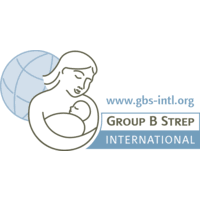When pregnant women are tested for group B strep (GBS), some might wonder about how this particular bacteria can cause harm. July’s International Group B Strep Awareness Month aims to provide information and awareness around this potentially devastating pregnancy, birth, and early infant complication.
“Babies can become infected with GBS during passage through the birth canal if their mother is colonized,” says Marti Perhach, CEO and cofounder of Group B Strep International, whose daughter Rose was stillborn due to group B strep. “If exposed to GBS in this way, babies can then become colonized at the mucus membrane sites of their gastrointestinal or respiratory tracts.”
Pregnant women are routinely screened for group B strep in late pregnancy, but not always. Because the bacteria can be passed along to the baby during pregnancy and delivery, infants are especially susceptible to infection. “GBS can be dangerous to babies due to their underdeveloped immune systems and the virulence of group B strep,” says Perhach. “GBS most commonly causes sepsis, meningitis, and pneumonia. Some GBS survivors experience handicaps such as blindness, deafness, mental challenges, and/or cerebral palsy.”
The Centers for Disease Control and Prevention offers a clear explanation about GBS infection in this Prevention of Perinatal Group B Streptococcal Disease report (page 3) where the organization notes the following guidelines: “Early-onset infections (within the first 7 days of life) are acquired vertically through exposure to GBS from the vagina of a colonized woman. Neonatal infection occurs primarily when GBS ascends from the vagina to the amniotic fluid after onset of labor or rupture of membranes, although GBS also can invade through intact membranes. GBS can be aspirated into the fetal lungs, which in turn can lead to bacteremia. Infants also can become infected with GBS during passage through the birth canal; infants who are exposed to the organism through this route can become colonized at mucus membrane sites in the gastrointestinal or respiratory tracts.”
The bacterium is the leading cause of infection in newborns in the United States, Perhach says, and is particularly dangerous because it can morph into severe symptoms very quickly. And while many people think of strep throat when they hear about strep bacteria, the kind that often affects the throat is strep A.
Even women who test negative for GBS in the last weeks of pregnancy can still become colonized or they may receive a test with a false negative result. “More than 60 percent of GBS cases within the first seven days of life occur in babies whose mothers had tested negative for GBS,” Perhach says. GBS is a naturally occurring bacteria, often found in the gastrointestinal tract where it is the source for genitourinary colonization, she says.
What do nurses need to know about group B strep infection? According to Perhach, it’s essential to recognize that pregnancy and delivery can pose a risk for GBS infection, but GBS can still cause potential for harm before and after delivery. “GBS can cause babies to be miscarried or stillborn (known as prenatal-onset GBS disease) as well as born too soon,” she says. “GBS can cause preterm labor and preterm premature rupture of membranes. GBS can also infect babies from seven days after birth up to several months of age which is called late-onset. Late-onset disease is primarily acquired by horizontal transmission from the mother, but also can be acquired from hospital sources or from individuals in the community.”
And although treatment is generally intrapartum antibiotics given to women, they are only effective about 90 percent of the time, says Perhach. “Nurses should know the signs and symptoms of possible GBS infection in babies, before and after birth,” says Perhach. Group B Strep International has several brochures for nurses to find more information. Because GBS can still show up in the early months of an infant’s life, it’s especially important for neonatal nurses and others who might encounter parents and infants to be aware.
Group B Strep International is also offering a free online presentation “Signs of GBS Disease: Eyes and Ears” during the International Conference on Group B Strep (ICGBS) 2020 July 20-22 (the presentation can be accessed online after the conference as well).
Spreading the word about preventing GBS infections, prevention measures, and awareness of the signs and symptoms of infection can go a long way toward catching the problem early and preventing a problem.
- WOC Nurses Week Highlights Specialty - April 16, 2024
- Honoring Radiology Nurses Day on April 12 - April 12, 2024
- Travel Offers New Career Possibilities - April 8, 2024



